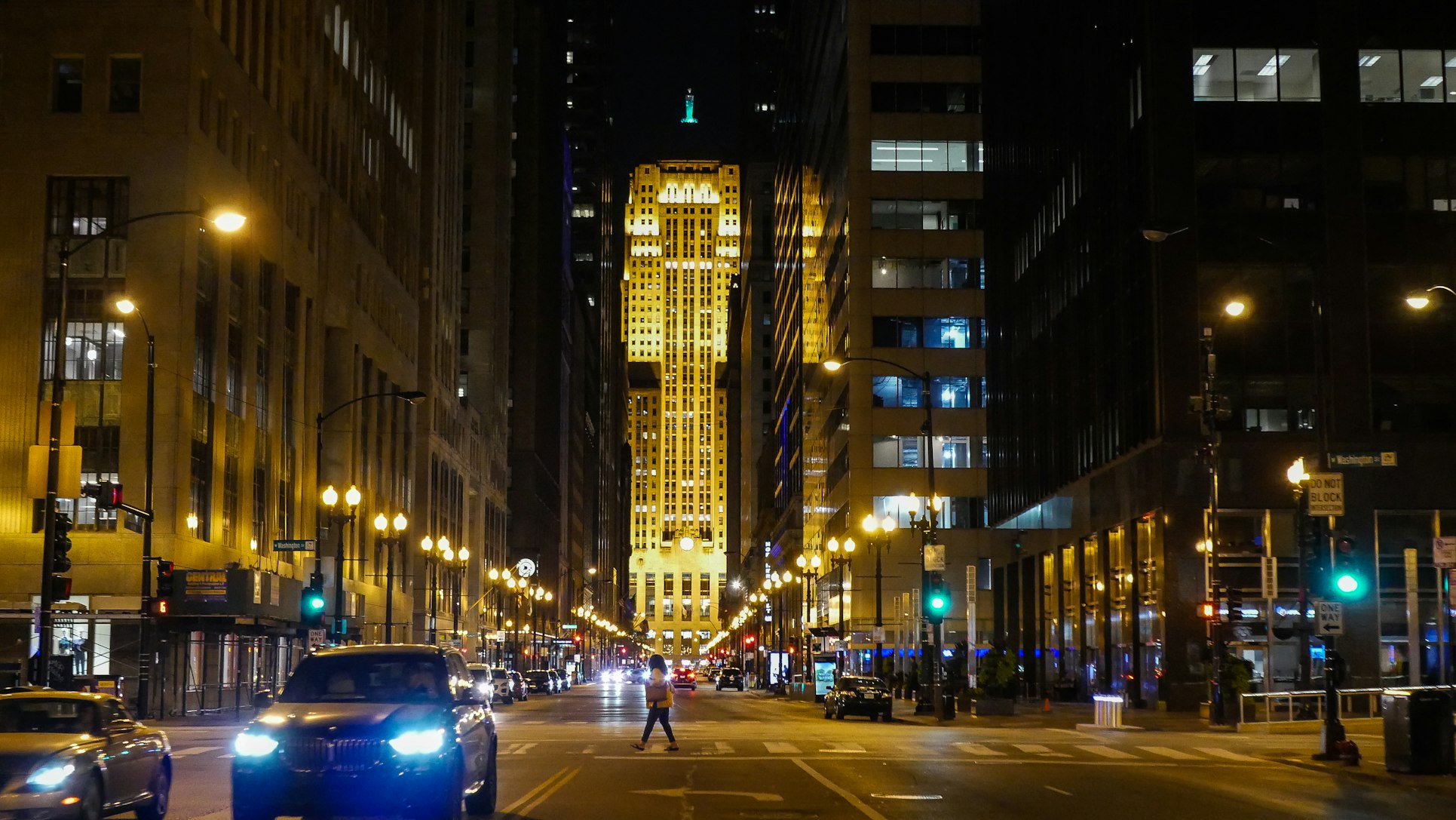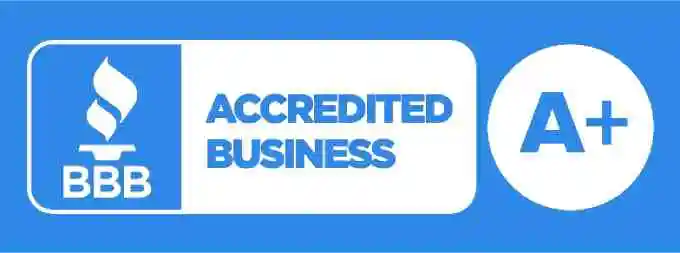When you’re on the roads of Chicago, or anywhere in Illinois, it’s crucial to have the proper insurance. American Auto Insurance provides the most affordable and reliable local car insurance in the state with options for every driver. We even offer plans to keep you in compliance with SR-22 regulations. Once insured, you can review the following information to streamline your travel throughout the city of Chicago and beyond.
The Grid System

Like many big cities, Chicago’s streets are set up in a grid pattern. Before the implementation of this system, Chicago was such a mess that the postal service threatened to stop delivering mail altogether. A private citizen, Edward P Brennan recommended the grid system to the city council. After years of consideration and revisions, Chicago established its grid system in 1909.
The center of the Chicago grid is located in the Chicago Loop at the intersection of State Street, which runs north to south, and Madison Street, which runs east to west. These two streets establish the city’s grid, which is divided into four quadrants. The street addresses in Chicago all have a prefix of North, South, East, or West, based on their orientation to the State and Madison intersection. Streets with an East or West prefix run east-to-west, and those with a North or South prefix run north-to-south.
Thus, an address with the prefix North is north of Madison. An address that begins with East is east of State Street. Since the intersection of State and Madison is close to Lake Michigan, most addresses that begin with East are in The Loop or on the south side of the city, because you can’t go very far north on this line without hitting the water.
Chicago Street Names and Numbers
Chicago has eight standard city blocks per mile with 100 addresses per block. Some areas have half-block streets which are typically designated as “Place.” Numbering exceeds the 800’s in only a few cases. There are:
-
- 1,200 numbers between Madison Street and 12th Street.
-
- 1,000 numbers from 12th Street to 22nd Street
-
- 900 numbers from 22nd street to 31st Street.
The numbering in most cases increases to the next hundred at the street nearest the eighth-mile point within any given block. Address numbering begins at zero on State Street and Madison Street. Most of the east-west streets on the south side of the city are numbered. East-west streets on the north side of Chicago have names. In most cases, streets that run east-west are called “Street” while those running north-south are labeled as “Avenue,” though there are exceptions.
Where possible, streets were named in alphabetical order with a new letter at each mile. This method begins at Madison Street going northward on east-west streets, and at the Indiana State Line for north-south streets.
An odd-numbered address is always on the east or south side of the street, while an even-numbered address is on the west or north side.
Expressways
Traveling Chicago’s expressways is a speedy way to get around the city, but it can also be confusing if you’re new to the area. Here’s a guide to help you decode the interstates and expressways of Chicago, which are often one and the same.
-
- Bishop Ford Memorial Freeway: Interstate 94 (I-94) from Interstate 80 (I-80) to the Dan Ryan Expressway.
-
- Chicago Skyway: Interstate 90 (I-90) from the Dan Ryan Expressway to the Indiana Toll Road.
-
- Dan Ryan Expressway: I-90 and I-94 from the Bishop Ford/Interstate 57 to the Jane Byrne Interchange with express lanes between 31st and 67th.
-
- Edens Expressway: I-94 and U.S. 41 from the Kennedy Expressway to West Park Avenue.
-
- Eisenhower Expressway: Interstate 290 (I-290) from the Jane Byrne Interchange to Illinois Route 83.
-
- Jane Addams Memorial Tollway: Interstate 355 from Rockton Road to the Kennedy Expressway.
-
- Kennedy Expressway: Interstate 190, I-90, and I-94 from the Jane Byrne Interchange to O’Hare Airport with reversible express lanes between Edens Junction and Ohio/Ontario that run inbound in the morning and outbound in the afternoon.
-
- Kingery Expressway: I-80 and I-94 from the Bishop Ford Memorial Freeway to the Indiana State Line where it becomes the Borman Expressway.
-
- Ronald Reagan Memorial Tollway: Interstate 88 from I-290 to U.S. 30 in Rock Falls.
-
- Stevenson Expressway: Interstate 55 from DuSable Lakeshore Drive to County Line Road, at which point it becomes the Barack Obama Presidential Expressway.
-
- Tri-State Tollway: Interstate 294 and I-94 from Russell Road to the Bishop Ford Memorial Freeway.
-
- Veterans Memorial Tollway: I-90 from I-80 to I-290.
Peak Traffic Times
In 2002, Chicago was identified as the most congested city in the country and the second-most congested city in the world, second only to London. The average Chicago driver lost a whopping 155 hours in traffic in 2022. Chicago’s morning rush hour traffic occurs between 6 a.m. and 9 a.m. while the afternoon rush hour lasts from 3 p.m. to 7 p.m. The afternoon rush hour is heaviest between 4 p.m. and 5 p.m., particularly on Thursdays and Fridays.
Special events in the city will impact traffic as well. If there’s a major sporting event, concert, or festival taking place, you can expect traffic to increase in that part of the city. Keeping up to date with Chicago events can help you steer clear of these congested areas if you’re not attending these events yourself.
If you can avoid traveling during peak times, you should do so. If you must travel during peak traffic periods, consider using public transportation or check live traffic apps, such as Waze, so you can stay up to date on accidents and backups and adjust your route accordingly.
Parking in Chicago
Navigating to your destination is only half the battle in Chicago. You also need to know where to park once you get there. Parking garages are abundant, but these are also among the most expensive options in the city. ParkChicago is the city’s premiere parking app. This app will help you find conveniently located meter parking throughout the city. You can input your car information and payment method in advance, so you can secure your parking in just a tap or two once you’ve found a spot.
Insurance Regulations
The state of Illinois requires that all drivers carry the minimum liability coverage. If you don’t have the insurance you need, American Auto Insurance can help you find the right coverage. We’re equipped to answer all your questions about Chicago car insurance, SR-22 regulations, walk you through the options, and help you set up your plan. Call us now to get started.
cars on road in between high rise buildings during night time by Dylan LaPierre is licensed with Unsplash License


